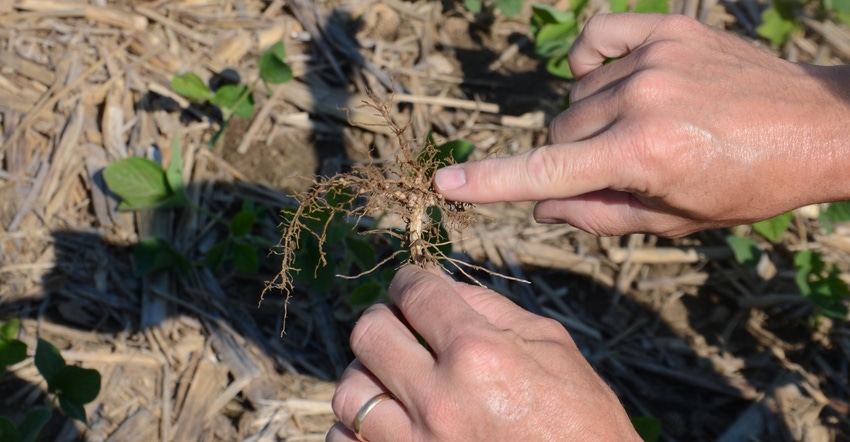
There was a time when most people thought 1 inch was deep enough to plant soybeans. The worry in conventional tillage was if you planted too deep, the soil might crust after a heavy rain before soybeans emerged. Some went so far as to not worry if they saw a bean here and there on the surface. That was especially true when many people were drilling soybeans, compensating for marginal depth control by applying more pounds of soybean seed per acre.
“I firmly believe we’re better off when we put soybeans an inch and a half deep or maybe a touch deeper,” says Steve Gauck, regional agronomy manager for Beck’s, based near Greensburg, Ind. “That’s easier to do with today’s modern split-row planters, and we see more people doing it.
“Planting deeper accomplishes two important things. You have better odds of getting each seed into moisture, which can pay off in terms of more uniform emergence. Secondly, I believe if seed is planted deeper, you have a better chance of roots starting in moist soil and getting off to a good start.
“You’re also more likely to get good nodulation quicker. Development of nodules with bacteria living inside is critical to obtaining a smooth transition from the seedling stage to early vegetative growth states. If it goes smoothly, plants stay green and take off quicker, growing faster.”
Pinpoint planting depth
Gauck doesn’t need to visit with a grower to know how deep he or she planted. He says you can usually determine planting depth accurately by digging up a few soybean plants and examining them closely.
Gauck demonstrated how it works in the Soybean Watch ’20 field. He dug up a few seedlings, then located the soil line on each one.
“That’s simply the spot where the stem is at the top of the soil before you dig it up,” he says. There will usually be a slight change in coloration on the stem. It’s almost always enough to tell where the soybean stem was in relation to the sop of the soil surface when in the ground.
Next, look at the stem above the roots. “Where roots start and where you first find soybean rhizobial nodules on the stem indicates where the seed was planted originally,” he explains. “When we did that in this field this year, we were finding at least an inch and a half of stem between the soil line mark and where rhizobial nodules first appear. That indicates that the seeds were likely planted about 1.5 inches deep.”
Gauck first visited the field this year when soybeans were transitioning from the V2 to V3 stage. “We were finding good nodulation on most plants,” he recalls. “They were transitioning to the stage where they get nitrogen from the air instead of from the soil effectively.
“The only exception to good nodulation were some plants we found which were suffering from the effects of sidewall compaction. There weren’t as many nodules on those plants, but there were some, and they were still maintaining a relatively good, green color.”
About the Author(s)
You May Also Like




